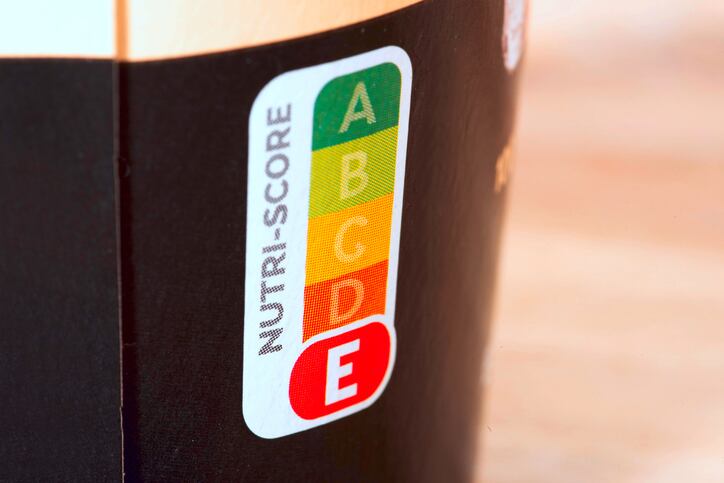Excessive sugar consumption is associated with a number of diet-related diseases, from Type 2 diabetes to cardiovascular diseases.
As consumer awareness around the impact of sugar consumption increases, so too do the number of food products carrying sugar claims. These include ‘sugar reduced’ and ‘without added sugar’.
However, other sugar-related claims related to the ‘sweetness’ of a product are also being used by food makers. Claims such as ‘less sweet’ relates to a taste description only, yet carries the risk that consumers associate them with a reduced sugar content.
In a new study out of Germany, researchers from Goettingen University have sought to determine whether sugar and taste claims give products a ‘health-halo’ – essentially making them appear healthier than they are.
The researchers also wanted to know how the front-of-pack (FOP) nutrition labelling scheme Nutri-Score might influence consumers’ evaluation of such products. Can Nutri-Score prevent the ‘health-halo’ effect of sugar and taste claims?
Reduced sugar claims mislead consumers
Data was collected via an online survey conducted in October 2020. A total of 1,103 people living in Germany participated in the survey.
They were asked for their perceptions after being presented with images of the packaging of three hypothetical products – instant cappuccino, chocolate muesli, and an oat drink – with different combinations of sugar claims and Nutri-Score labels.
How does Nutri-Score work?
Nutri-Score, developed in France in 2017, ranks food from -15 for the ‘healthiest’ products to +40 for those that are ‘less healthy’.
Based on this score, the product receives a letter with a corresponding code: from dark green (A) to dark red (F).
A statistical analysis of the survey data suggests that claims about reduced sugar did mislead participants into believing the hypothetical products were healthier than they actually were.
“Nutrition or taste claims about sugar on the front of packaging can improve the health perceptions of foods with poor health images,” noted the study authors.
When the Nutri-Score label was present, however, it served to counteract those effects. The FOP scheme reduced misconceptions about the healthiness of less nutritional foods.
“The present study results concur with studies demonstrating health-halo effects for advertising with nutritional claims, which may result in unhealthy food choices and even in an increased calorie intake,” the authors continued.
Regulating sugar claims
Given the negative impact that nutrition and taste claims could have on consumers’ perceptions of the healthiness of products, the study authors argue their use should be restricted.
While policymakers could prohibit their use, the authors suggest a less intrusive approach could be to limit the use of such claims to food products with minimum requirements for nutritional quality.
UK campaign group Action on Sugar agrees that more regulation on nutrition claims are required.
Health and nutrition claims are ‘far too prevalent, ‘almost ubiquitous’ in some categories, Mhairi Brown, Policy and Public Affairs Manager for Action on Salt and Action on Sugar, told FoodNavigator.
“There are currently no rules on the types of products that are allowed to use nutrition and health claims, meaning that they are frequently used on products that are high in sugar, total or saturated fat, or salt.
“Many products high in sugar, fat or salt also display claims such as ‘no artificial colours or preservatives’, ‘natural’, ‘packed with goodness’, and ‘100% wholegrain’, all of which contribute to the health halo of the product whilst doing nothing to highlight the health impacts of the more negative nutrients.”
Action on Sugar contributed to research last year which found that out of 500 products displaying health-halo claims, over half were high in fat, sugar or salt.
Further, one in two young people said they were more likely to purchase a product that has health and nutrition claims, with around two in three (66%) young people believing that ‘low in sugar’ or ‘no added’ sugar made a product healthy.
Enforcing nutrition labelling schemes
The German study suggested that misestimation of the healthiness caused by nutrition and taste claims are reduced by using the Nutri-Score.
As a result, the authors believe it would help if the Nutri-Score was mandatory, at least for companies that use such nutrition or taste claims on their products. “Against the background of the European debate on the introduction of a mandatory system for simplified nutrition labelling, this is perhaps the most promising approach for regulation,” they noted.
For Action on Salt and Action on Sugar, mandatory nutrition labelling is also the way forward.
“As a first step, all countries should implement front of pack labelling schemes that have been tailored to that country, such as Nutri-Score, traffic light labels, or Chile-style warning labels,” Brown told this publication.
While many countries have made progress in this area, Brown lamented that labelling schemes remain largely voluntary and therefore do not have to be displayed on all products sold in supermarkets.
Once nutrition information is in place, governments must develop ‘ambitious and mandatory’ criteria for the display of health and nutrition claims, she continued.
For example, in countries that adopt Nutri-Score, the government could mandate that only products with a green ‘A’ label would be able to display health and nutrition claims. Similarly, in countries that have adopted traffic light labels, products with red labels (indicating high levels of total fat, saturated fat, sugar and/or salt) should not be able to display claims,
“This would ensure that claims do not appear on products with high levels of sugar, salt or fat, reducing the health halo effect of less healthy products and adding an extra incentive to food companies to make their products healthier.”
Source: PLoS ONE
‘The influence of the Nutri-Score on the perceived healthiness of foods labelling with a nutrition claim on sugar’
Published 17 August 2022
DOI: https://doi.org/10.1371/journal.
pone.0272220
Authors: Kristin Jürkenbeck, Clara Mehlhose, Anke Zühlsdorf.




